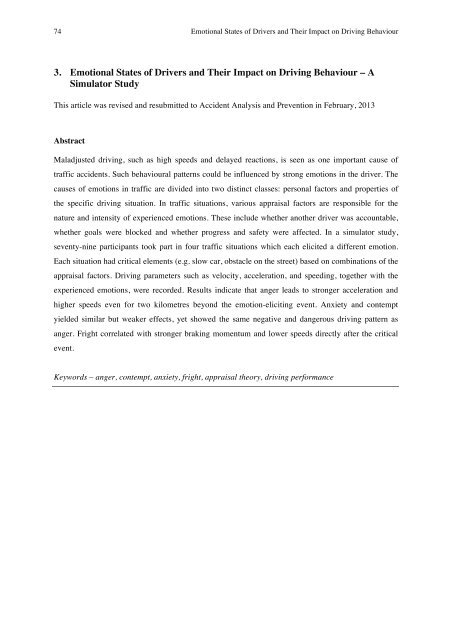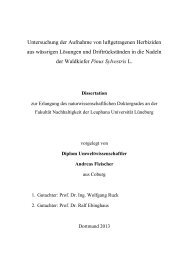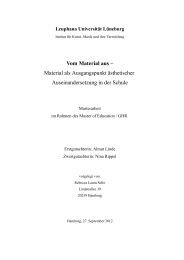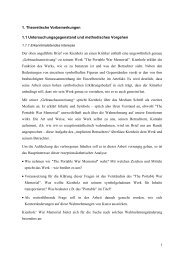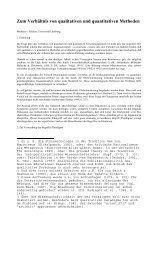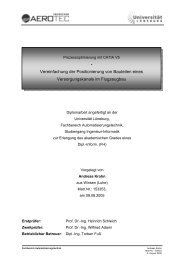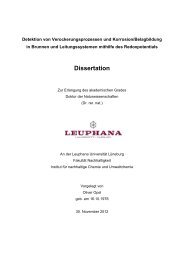Determinants of Emotional Experiences in Traffic Situations ... - OPUS
Determinants of Emotional Experiences in Traffic Situations ... - OPUS
Determinants of Emotional Experiences in Traffic Situations ... - OPUS
You also want an ePaper? Increase the reach of your titles
YUMPU automatically turns print PDFs into web optimized ePapers that Google loves.
74 <strong>Emotional</strong> States <strong>of</strong> Drivers and Their Impact on Driv<strong>in</strong>g Behaviour!<br />
3. <strong>Emotional</strong> States <strong>of</strong> Drivers and Their Impact on Driv<strong>in</strong>g Behaviour – A<br />
Simulator Study<br />
This article was revised and resubmitted to Accident Analysis and Prevention <strong>in</strong> February, 2013<br />
Abstract<br />
Maladjusted driv<strong>in</strong>g, such as high speeds and delayed reactions, is seen as one important cause <strong>of</strong><br />
traffic accidents. Such behavioural patterns could be <strong>in</strong>fluenced by strong emotions <strong>in</strong> the driver. The<br />
causes <strong>of</strong> emotions <strong>in</strong> traffic are divided <strong>in</strong>to two dist<strong>in</strong>ct classes: personal factors and properties <strong>of</strong><br />
the specific driv<strong>in</strong>g situation. In traffic situations, various appraisal factors are responsible for the<br />
nature and <strong>in</strong>tensity <strong>of</strong> experienced emotions. These <strong>in</strong>clude whether another driver was accountable,<br />
whether goals were blocked and whether progress and safety were affected. In a simulator study,<br />
seventy-n<strong>in</strong>e participants took part <strong>in</strong> four traffic situations which each elicited a different emotion.<br />
Each situation had critical elements (e.g. slow car, obstacle on the street) based on comb<strong>in</strong>ations <strong>of</strong> the<br />
appraisal factors. Driv<strong>in</strong>g parameters such as velocity, acceleration, and speed<strong>in</strong>g, together with the<br />
experienced emotions, were recorded. Results <strong>in</strong>dicate that anger leads to stronger acceleration and<br />
higher speeds even for two kilometres beyond the emotion-elicit<strong>in</strong>g event. Anxiety and contempt<br />
yielded similar but weaker effects, yet showed the same negative and dangerous driv<strong>in</strong>g pattern as<br />
anger. Fright correlated with stronger brak<strong>in</strong>g momentum and lower speeds directly after the critical<br />
event.<br />
Keywords – anger, contempt, anxiety, fright, appraisal theory, driv<strong>in</strong>g performance


